Abstract
1. The electrical response of isolated toad skins to the presence of 4 × 10-5 M noradrenaline in the inner medium has been studied.
2. When skins were bathed in Ringer solution, noradrenaline initiated a partial depolarization of the skin potential (inside surface becoming less positive) followed by a hyperpolarization; however, noradrenaline depolarized skins in sulphate Ringer.
3. The origin of the hyperpolarizing phase of the response to noradrenaline was studied by comparing the size of perturbations in the skin potential, produced by identical changes in external sodium, external chloride or internal potassium concentrations, before and during the response to noradrenaline.
4. Measurements of skin conductance were made in different sulphate media in order to estimate the magnitudes of the conductance of the shunt pathway through the skin and the conductance of the pathway for actively transported sodium ions.
5. Interpretation of both the variations in the perturbations of skin potential and the skin conductance measurements led to the conclusion that the hyperpolarizing phase of the response to noradrenaline was generated by an increase in the sodium to chloride permeability ratio for the outer barrier. It was considered that other evidence was compatible with this view.
6. Similar experimental methods were employed to study the action of antidiuretic hormone (ADH) and an elevated external concentration of calcium on the outer barrier. It was found that ADH increased the sodium to chloride permeability ratio whereas calcium decreased it. The separate actions of ADH and calcium on the sodium permeability of the outer barrier did not interfere apparently with the subsequent ability of noradrenaline to increase the sodium to chloride permeability ratio for this barrier in the skin.
Full text
PDF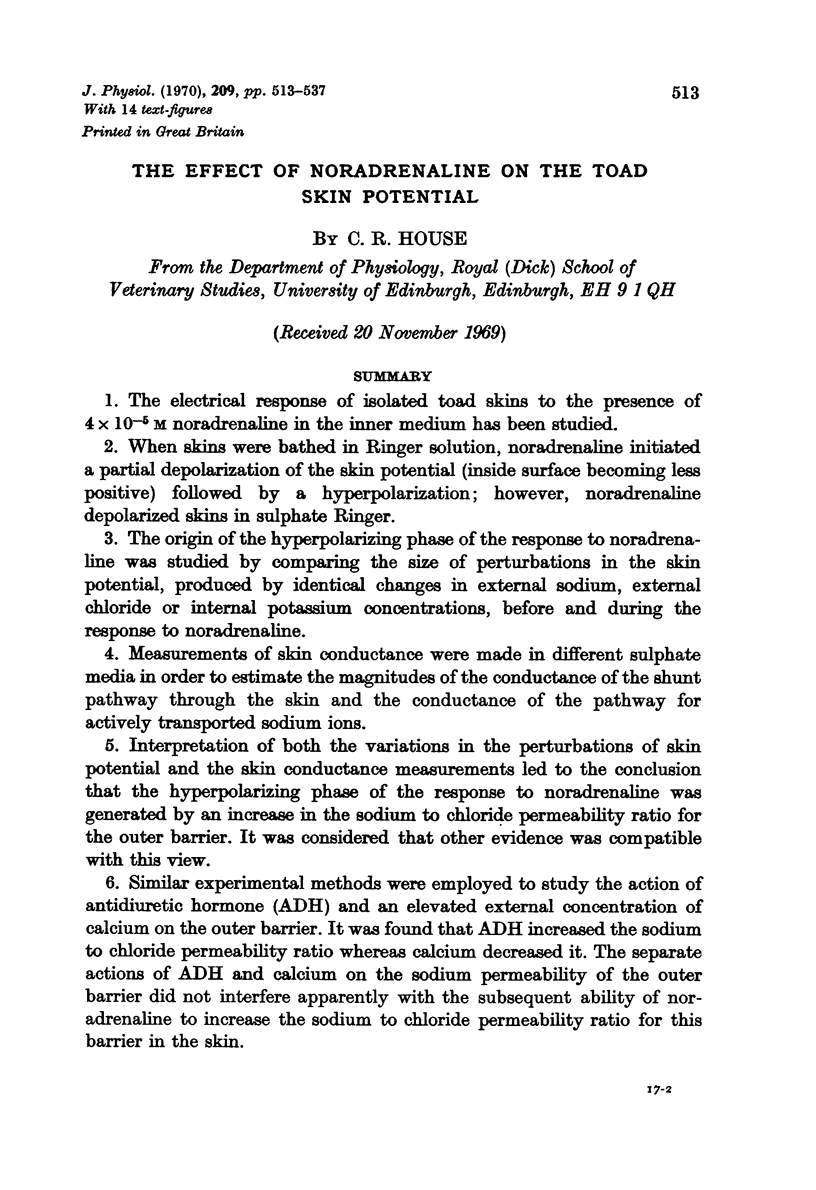
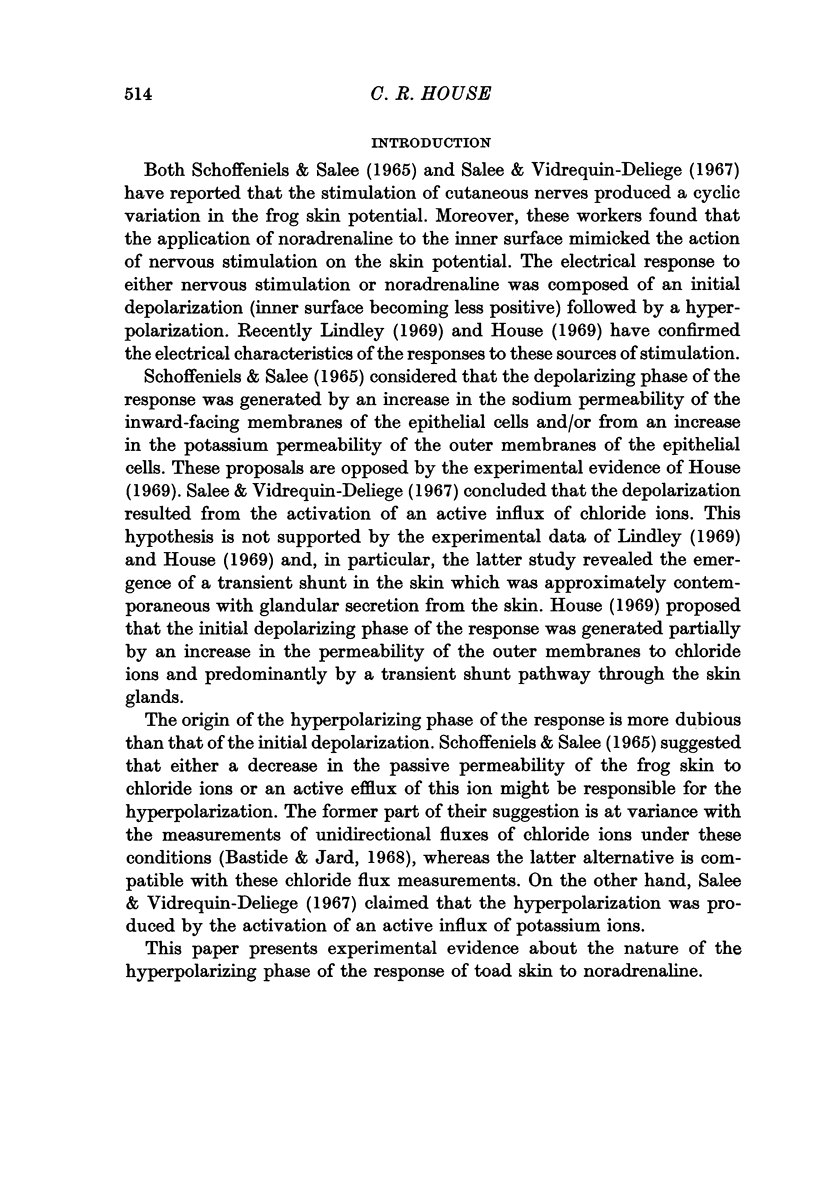
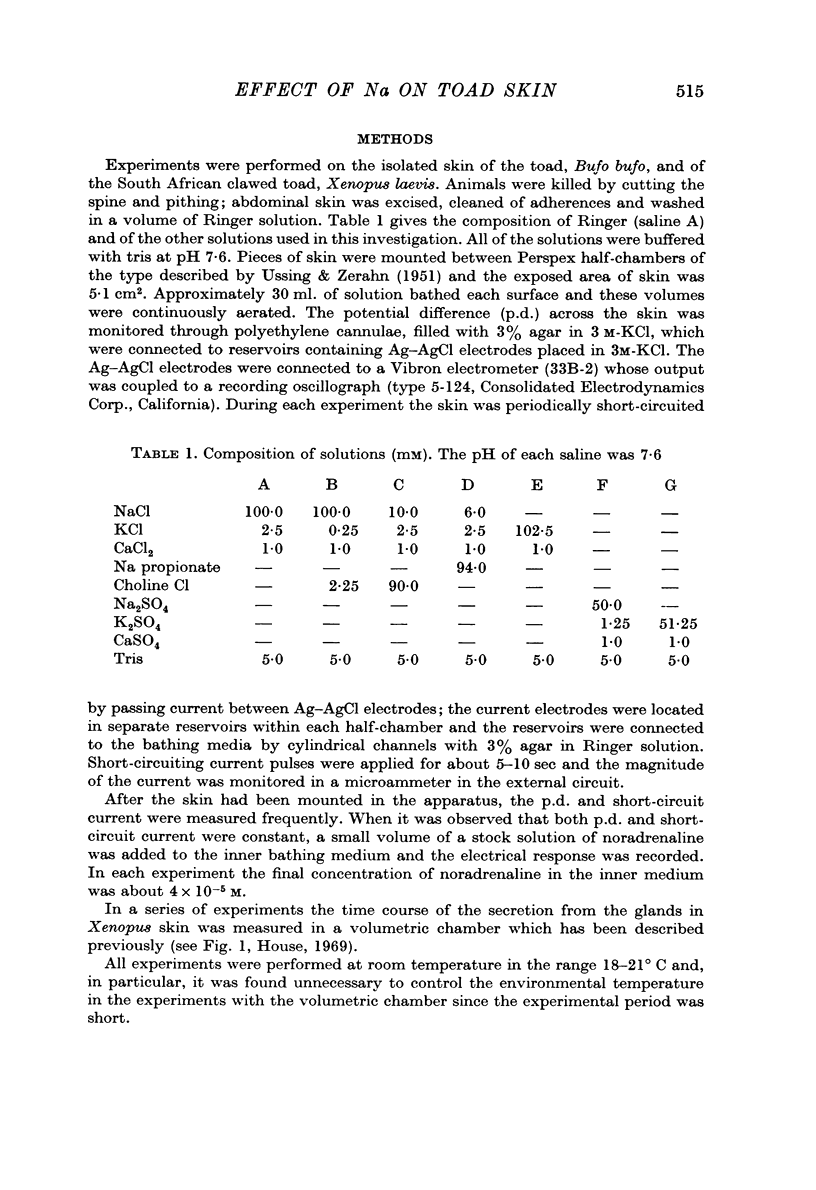
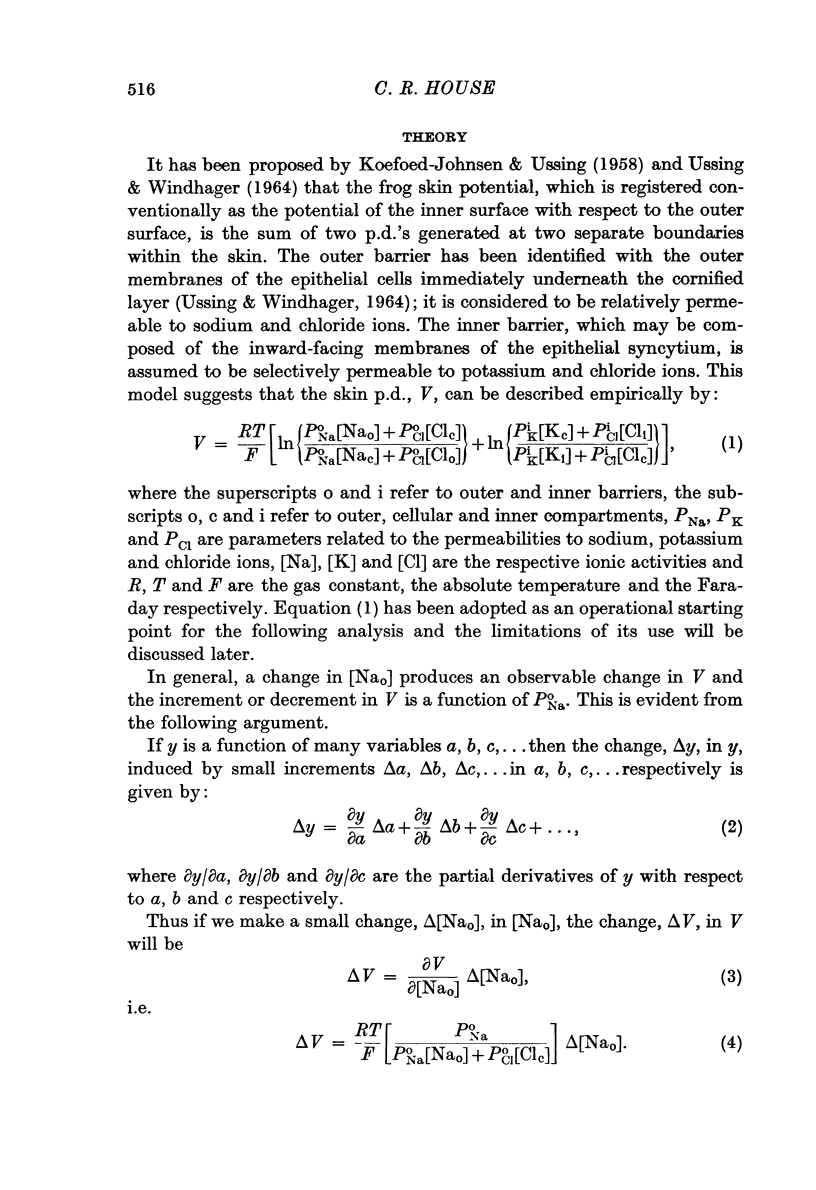
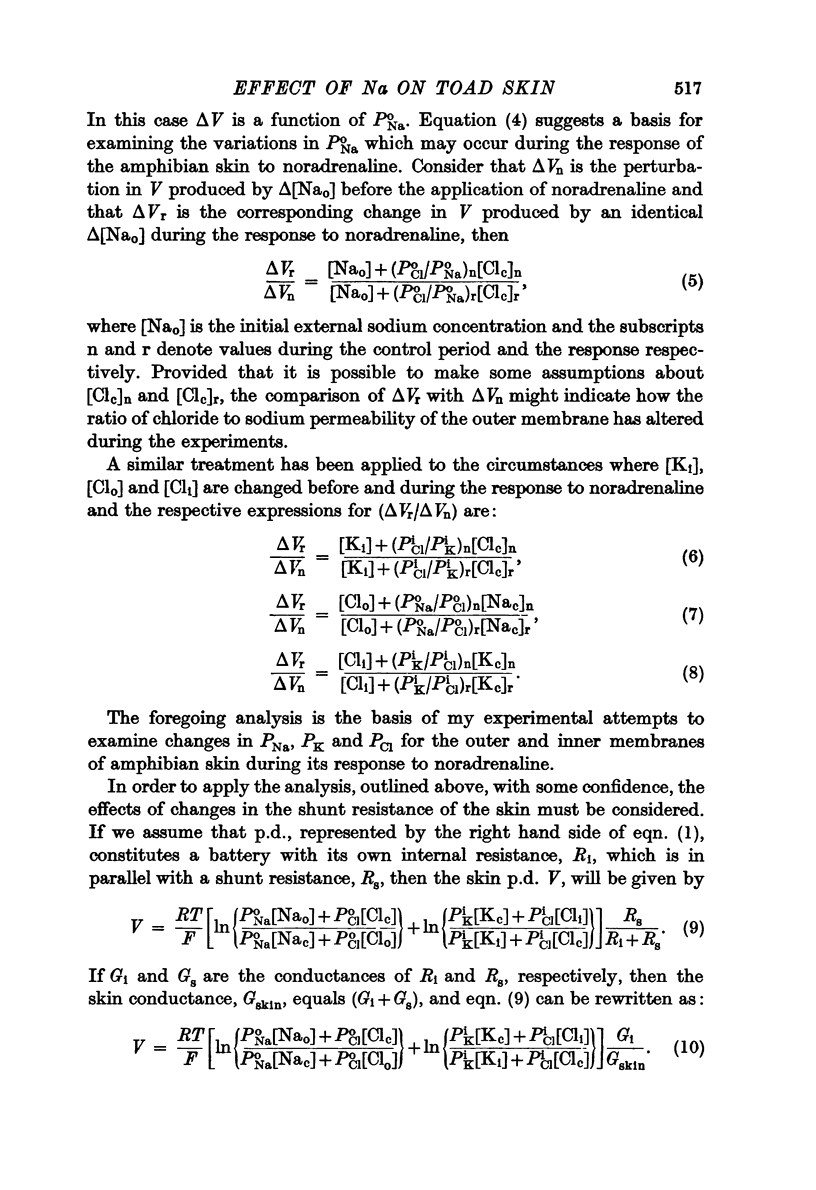
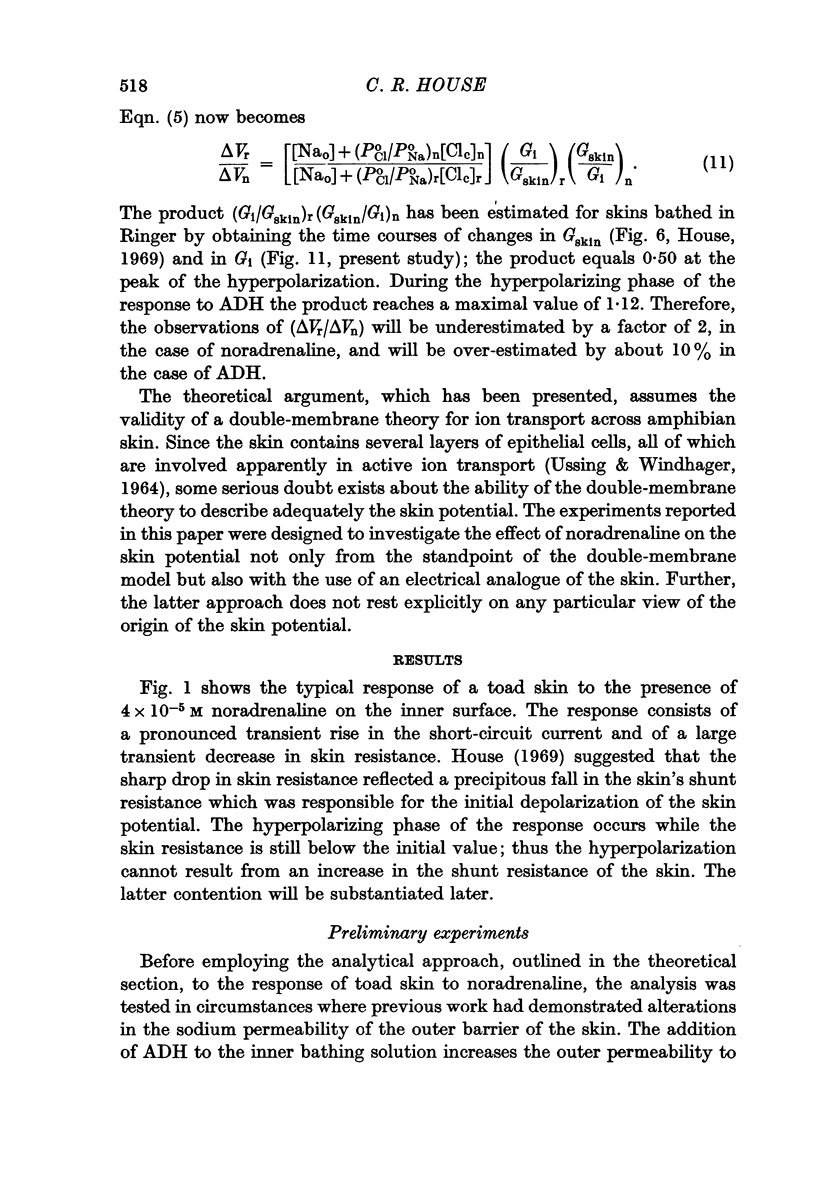
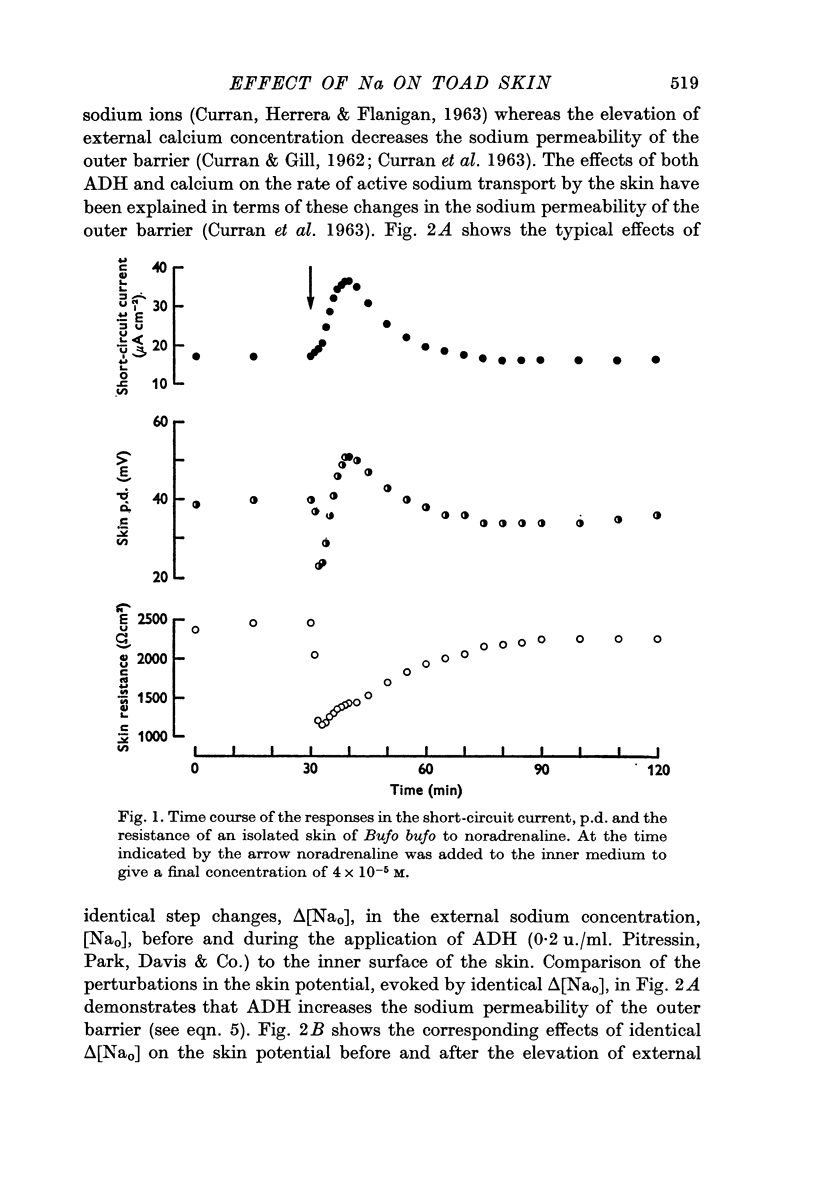
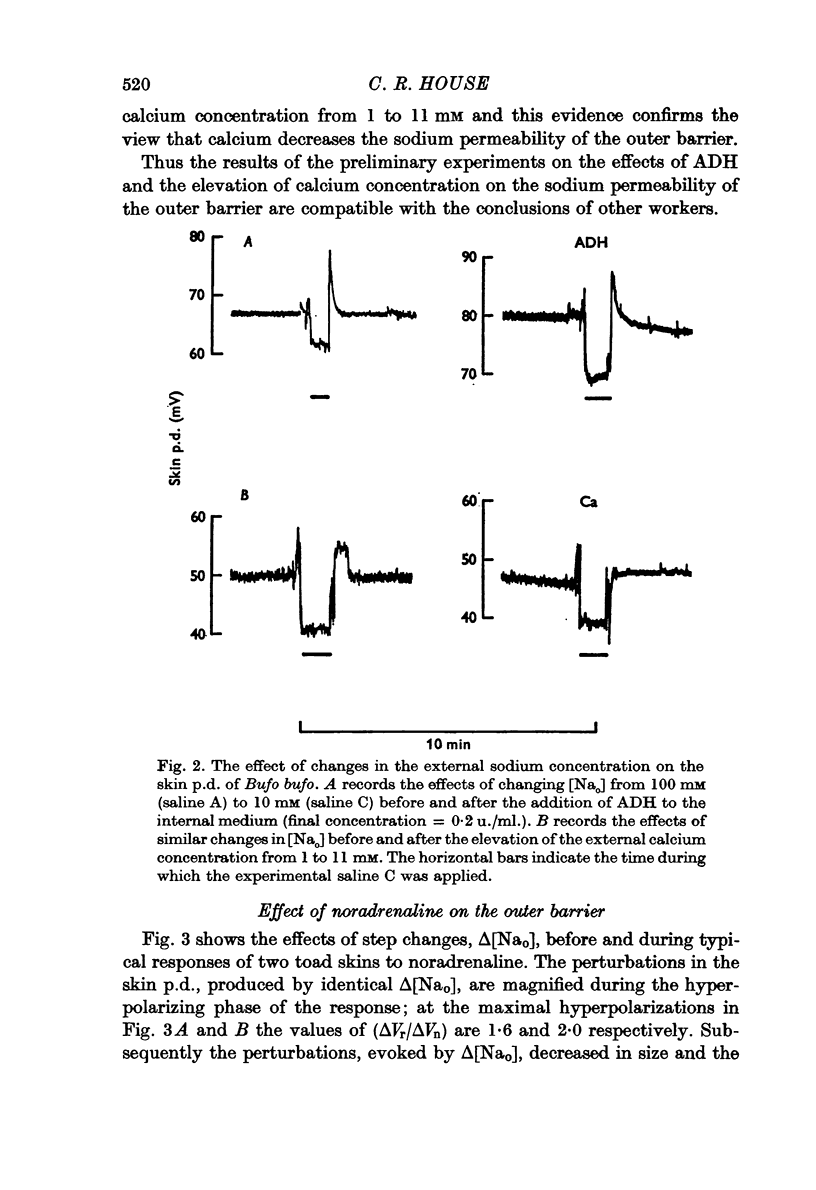
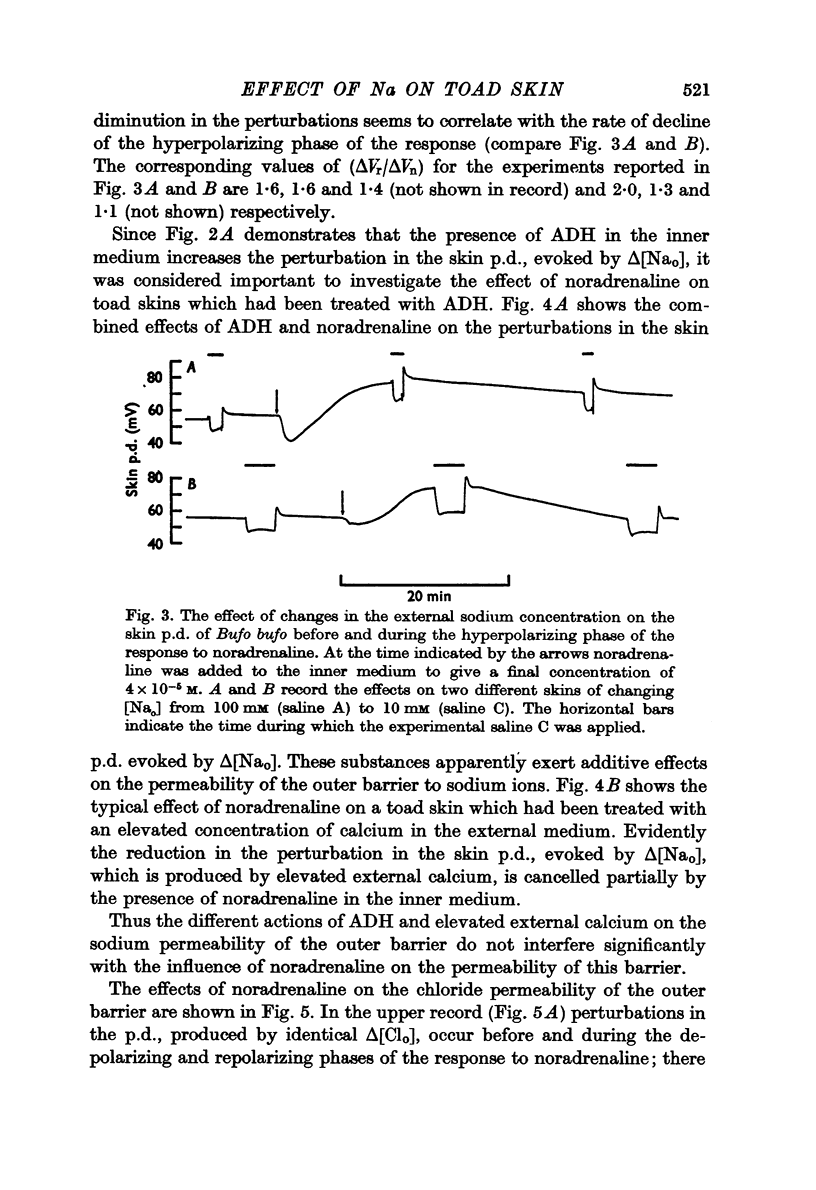
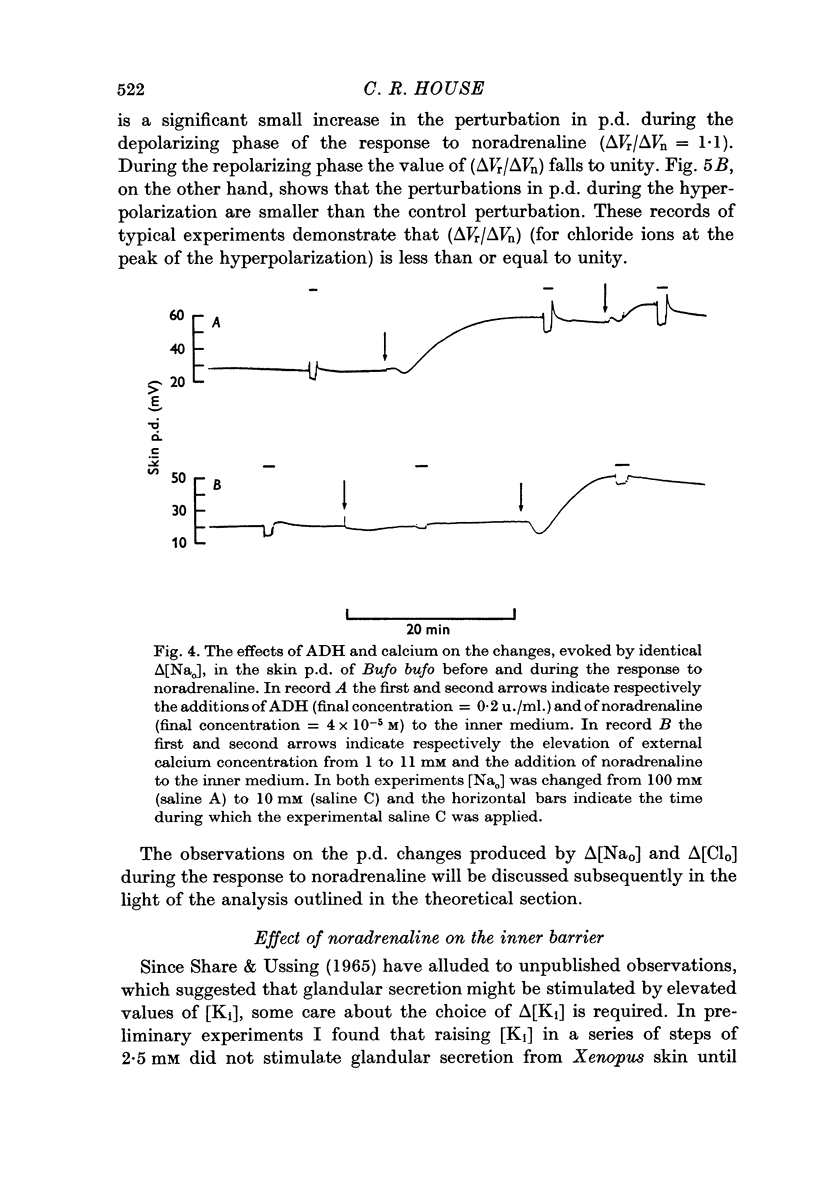
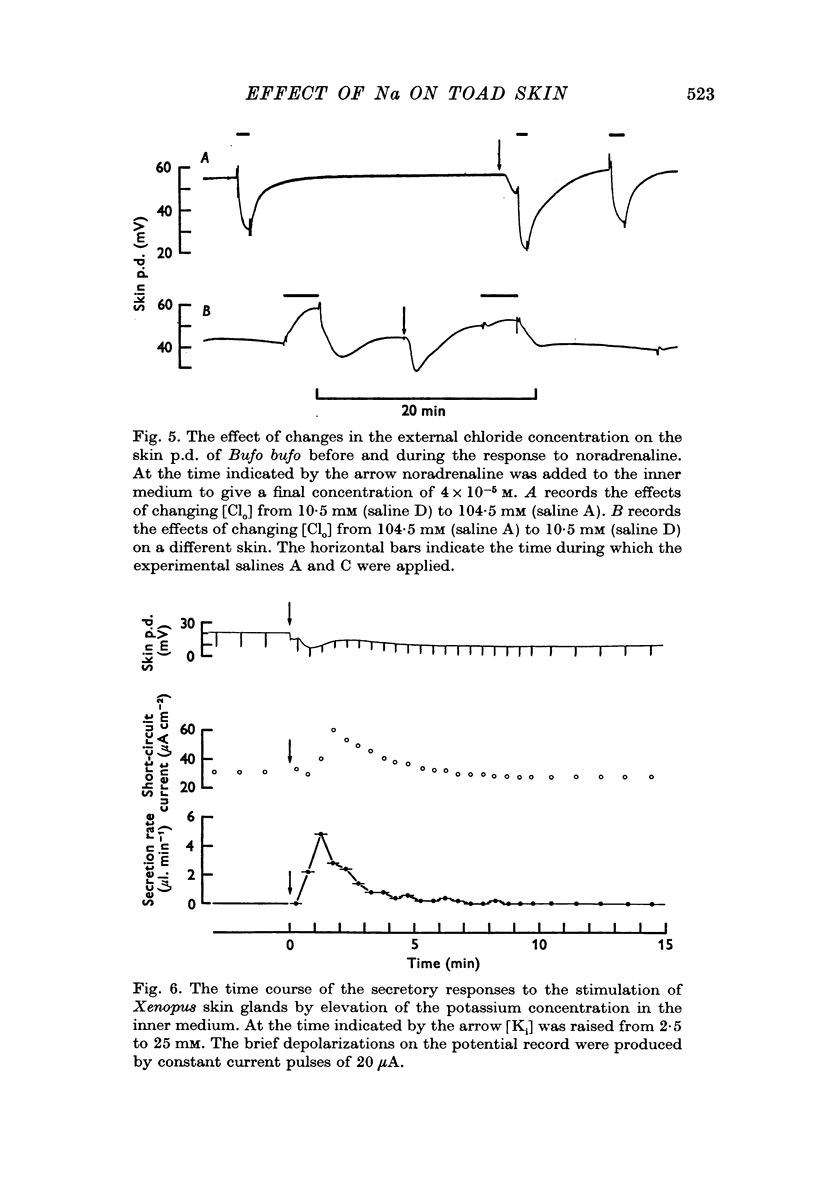
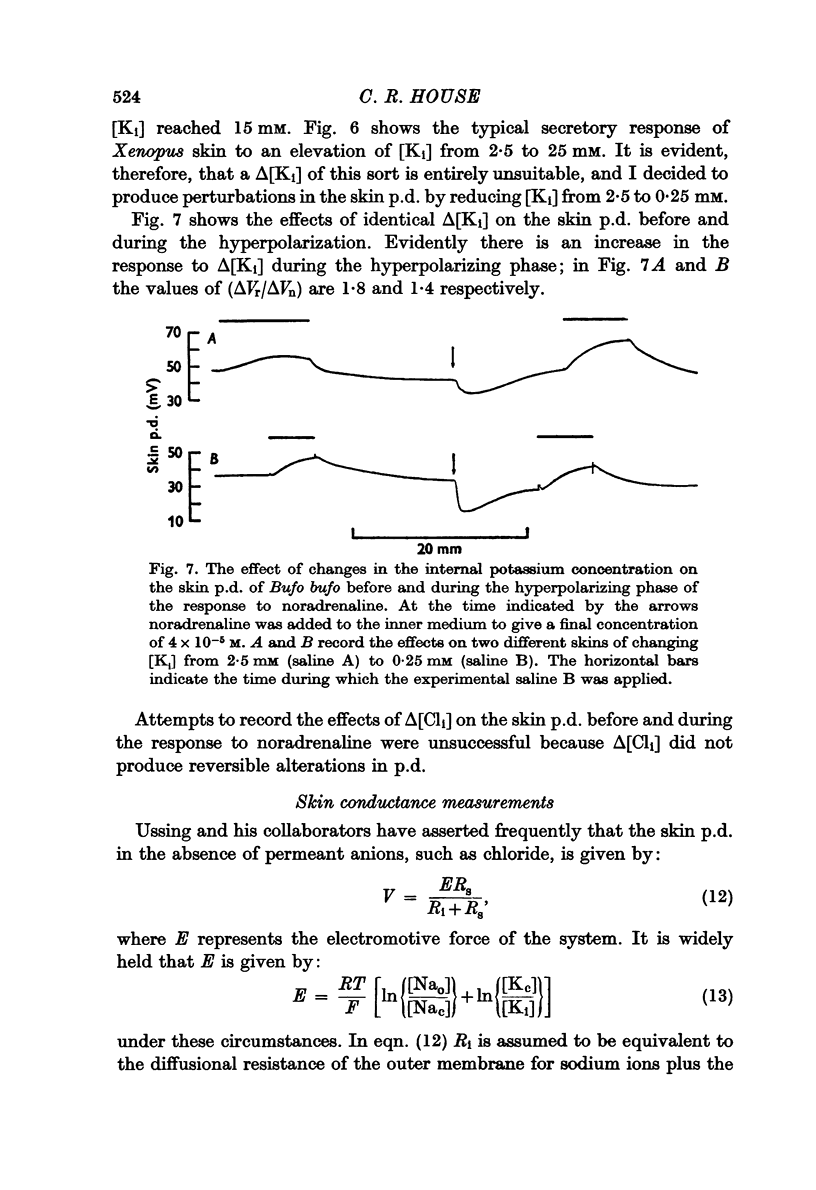
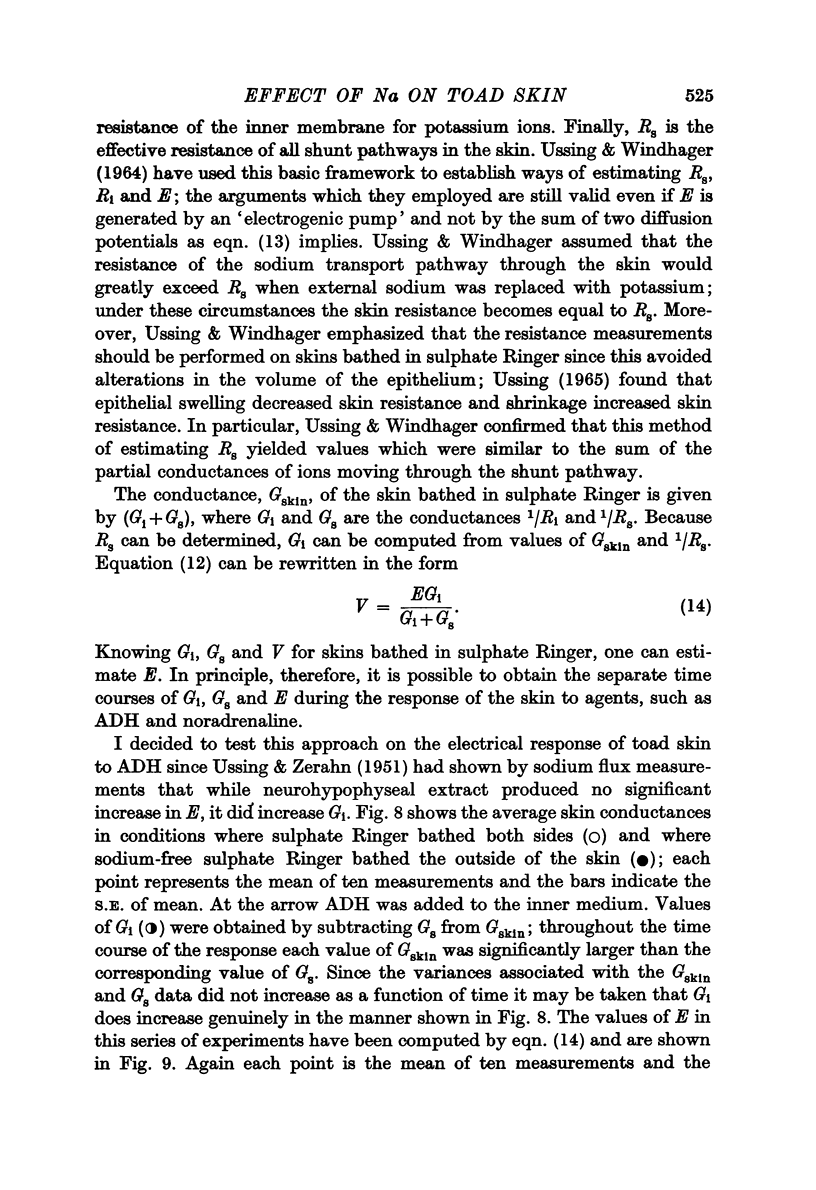
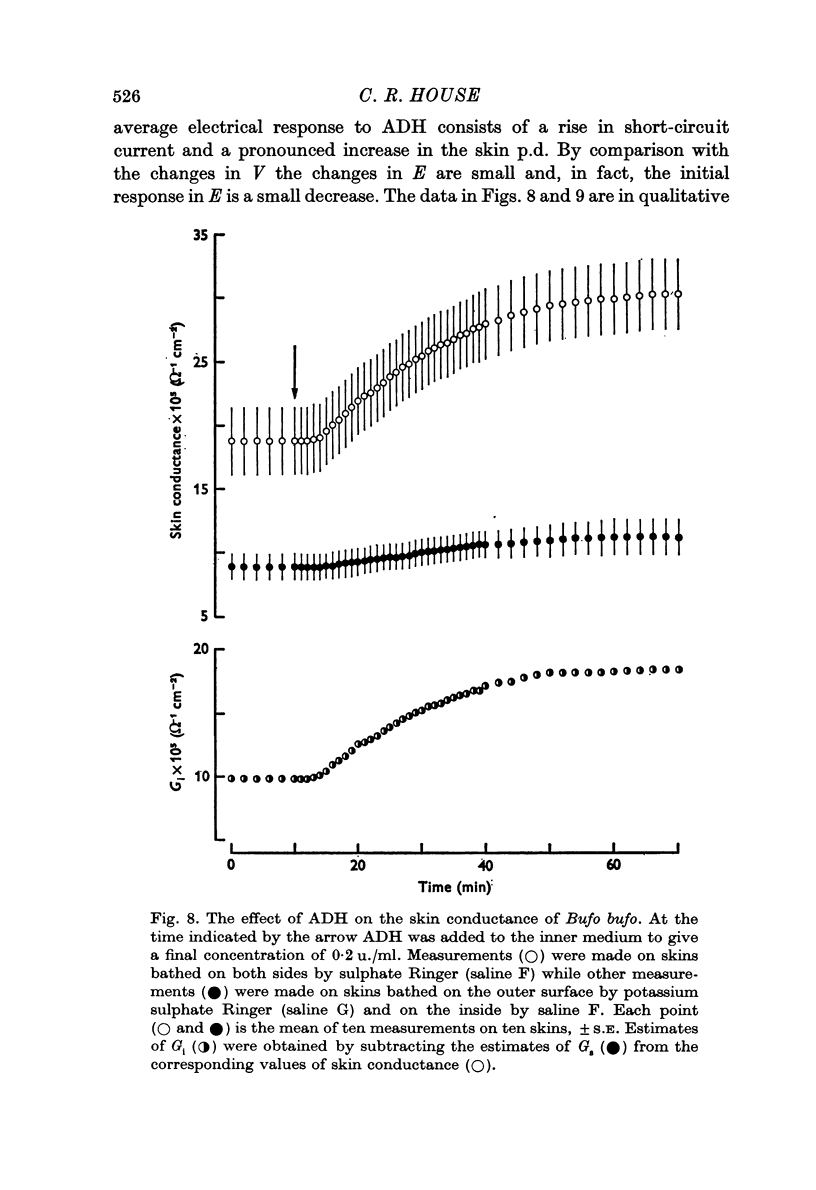
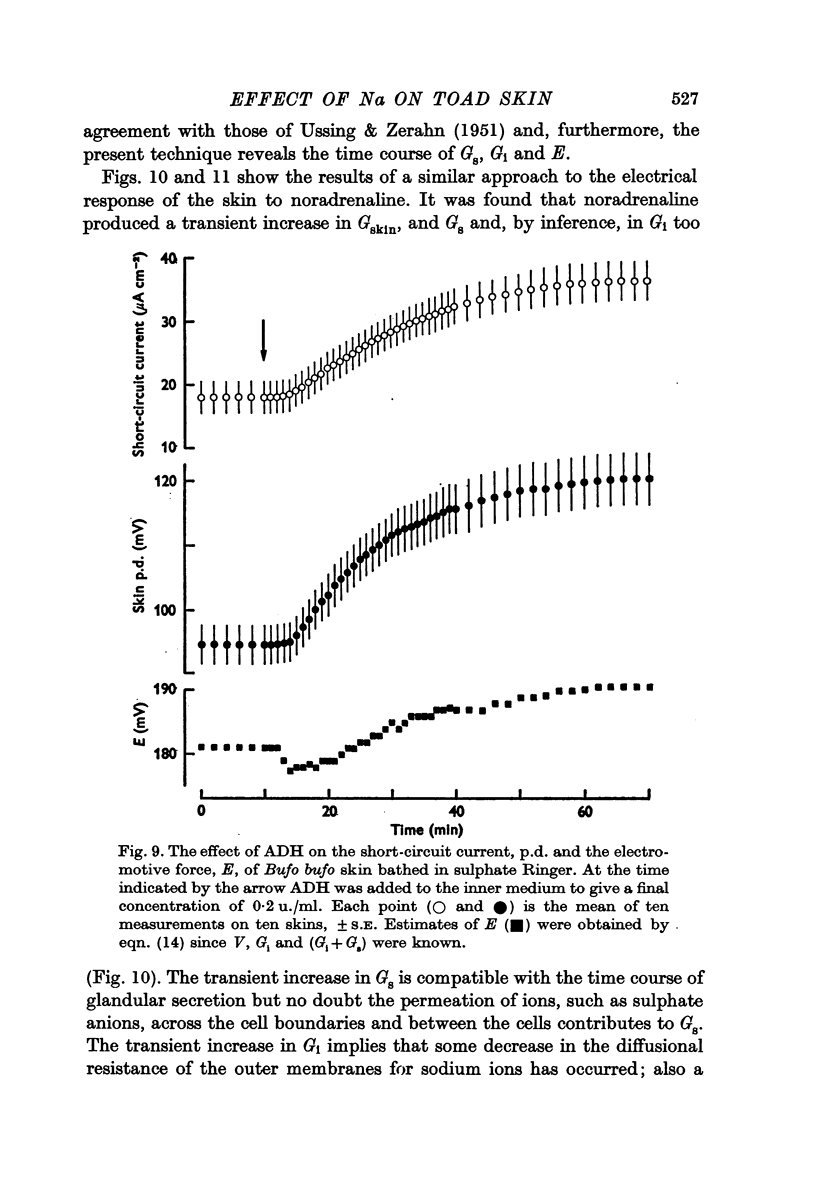
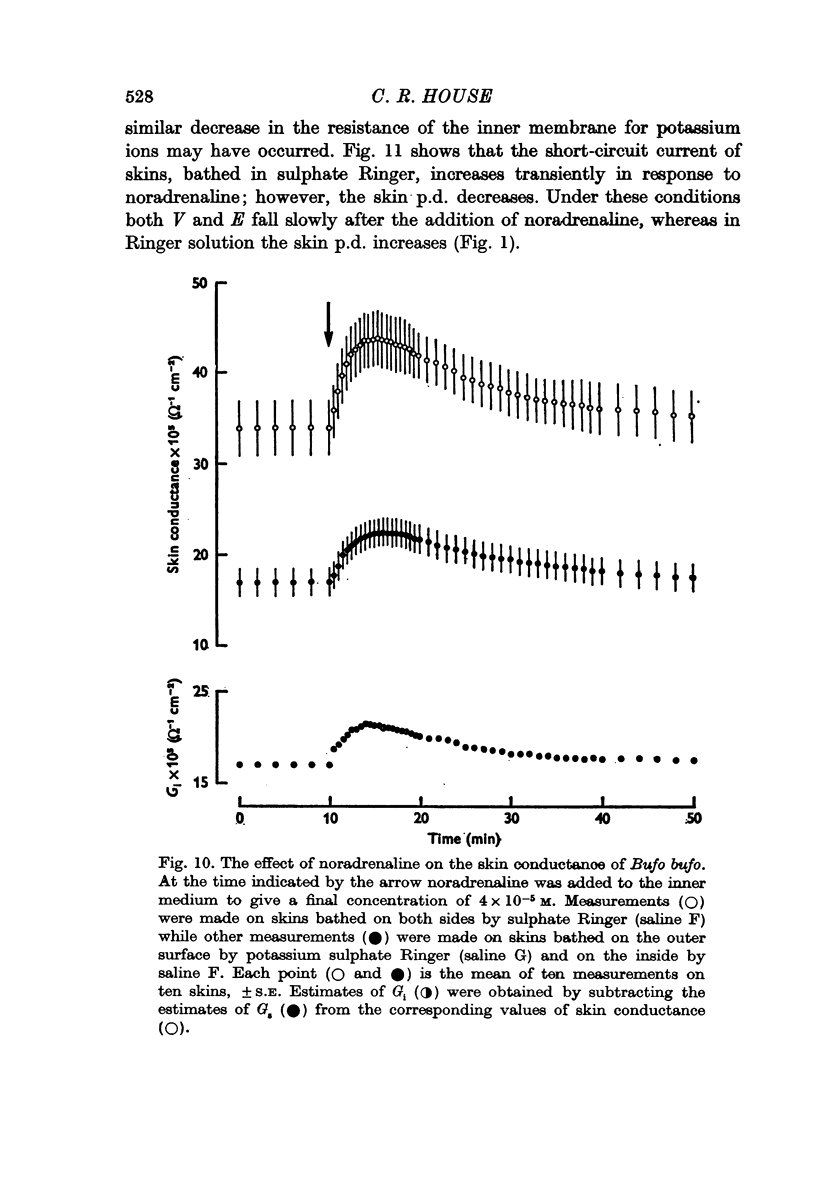
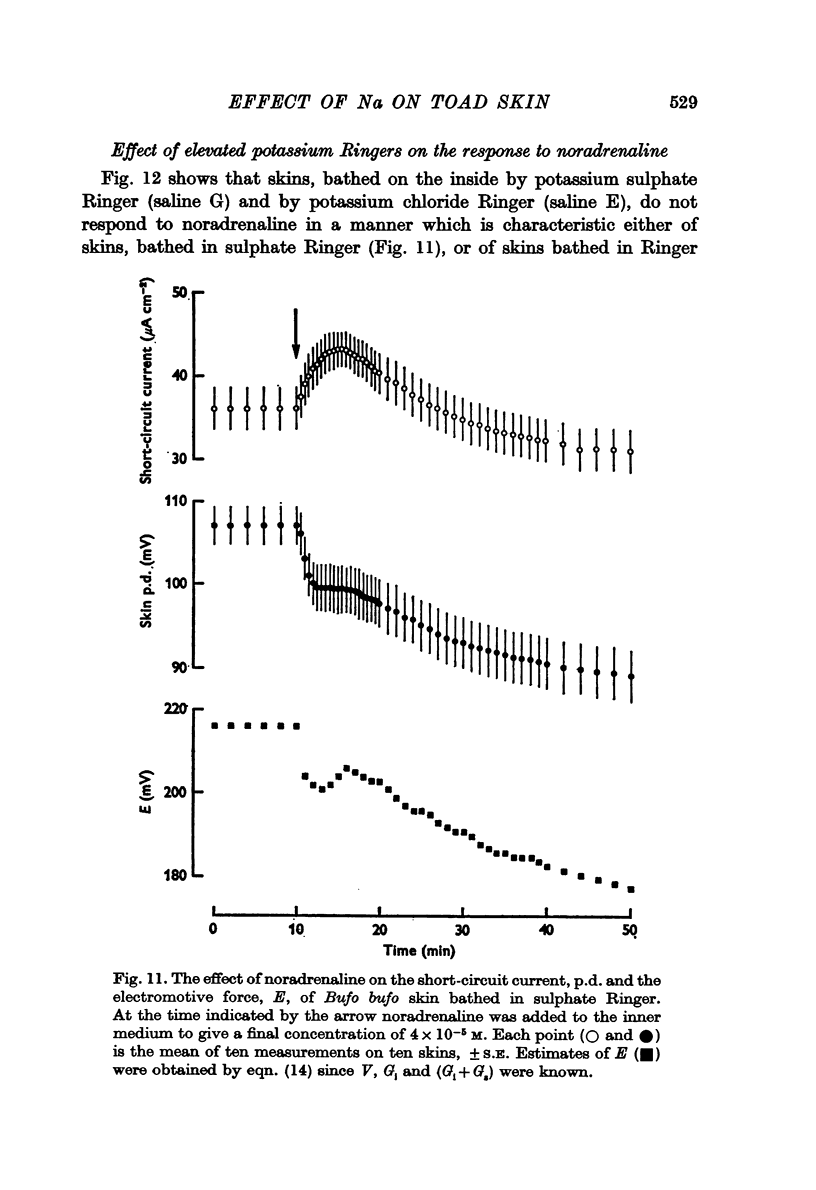
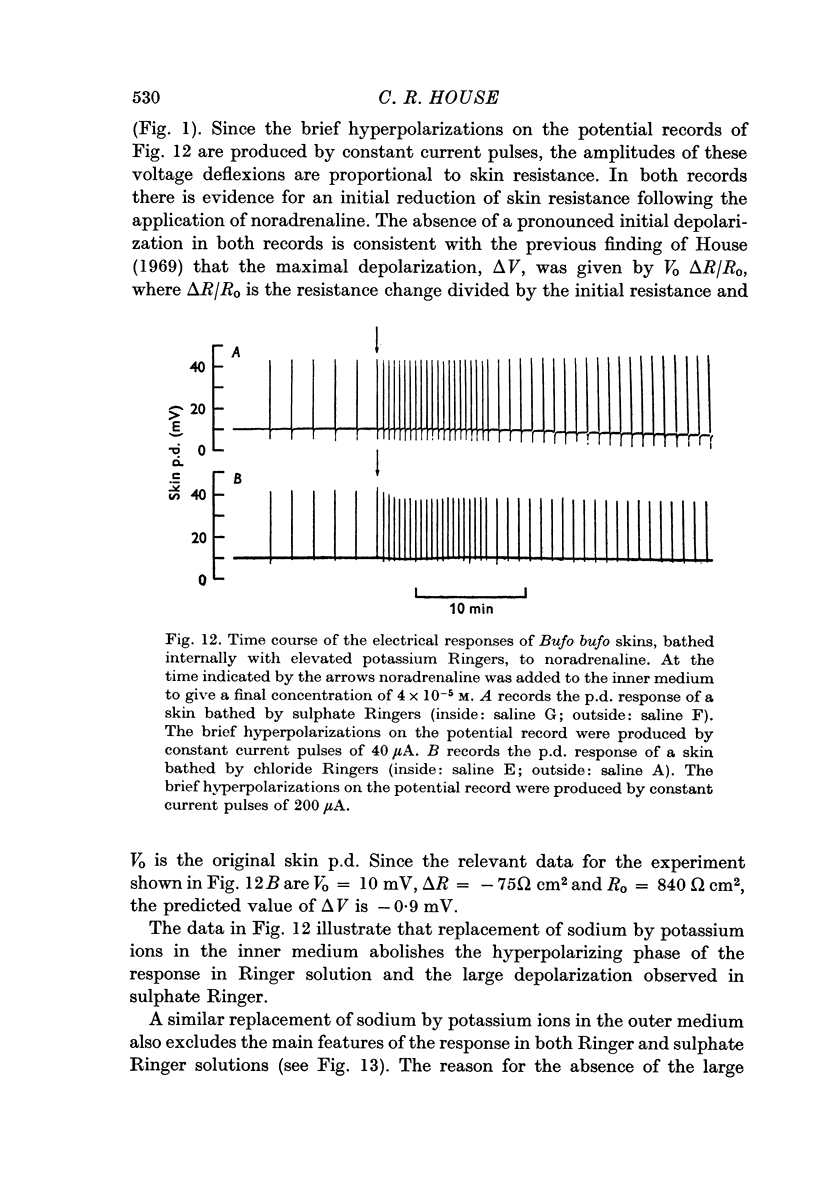
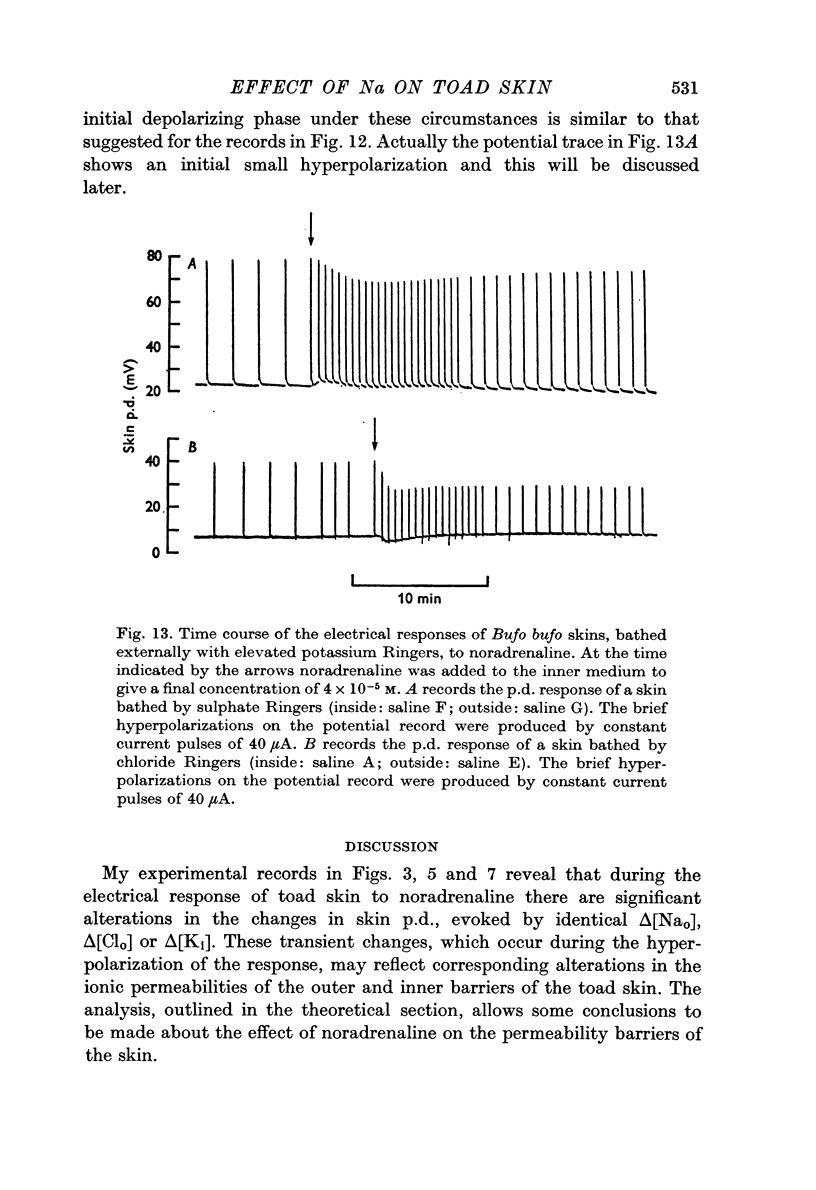
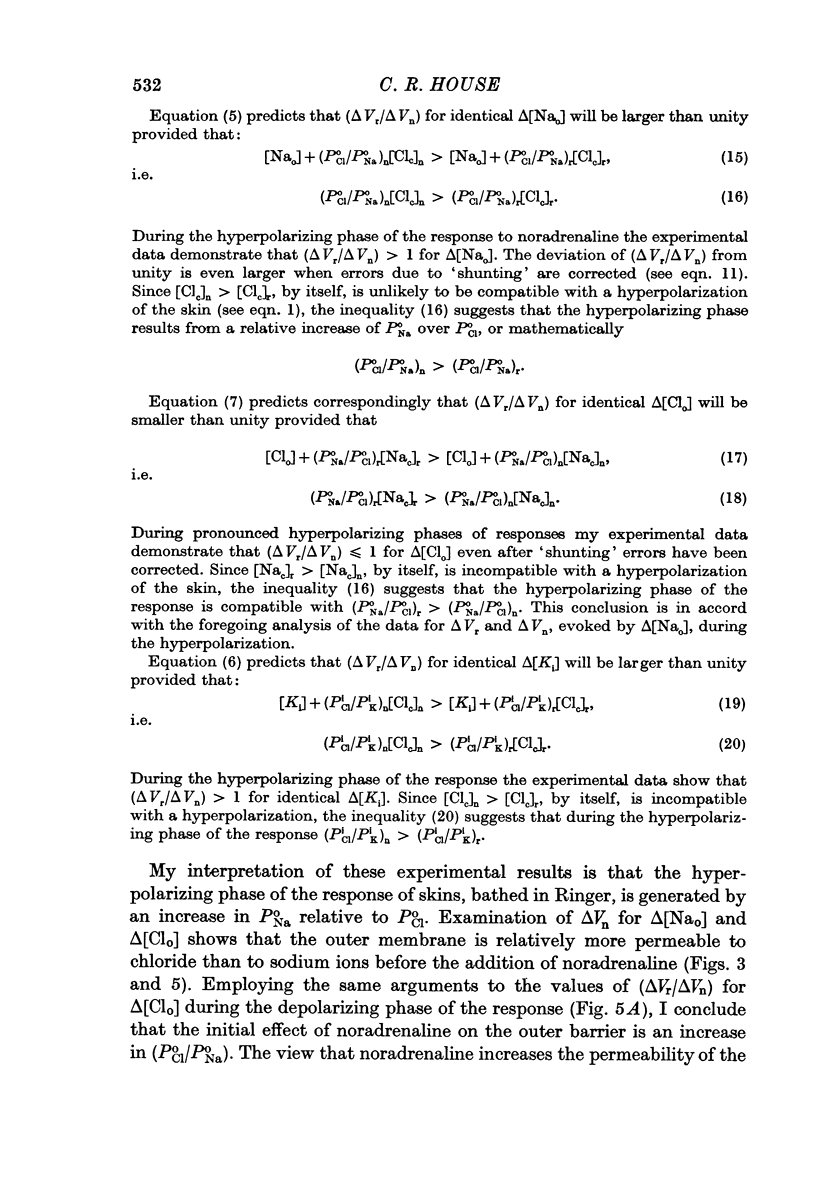
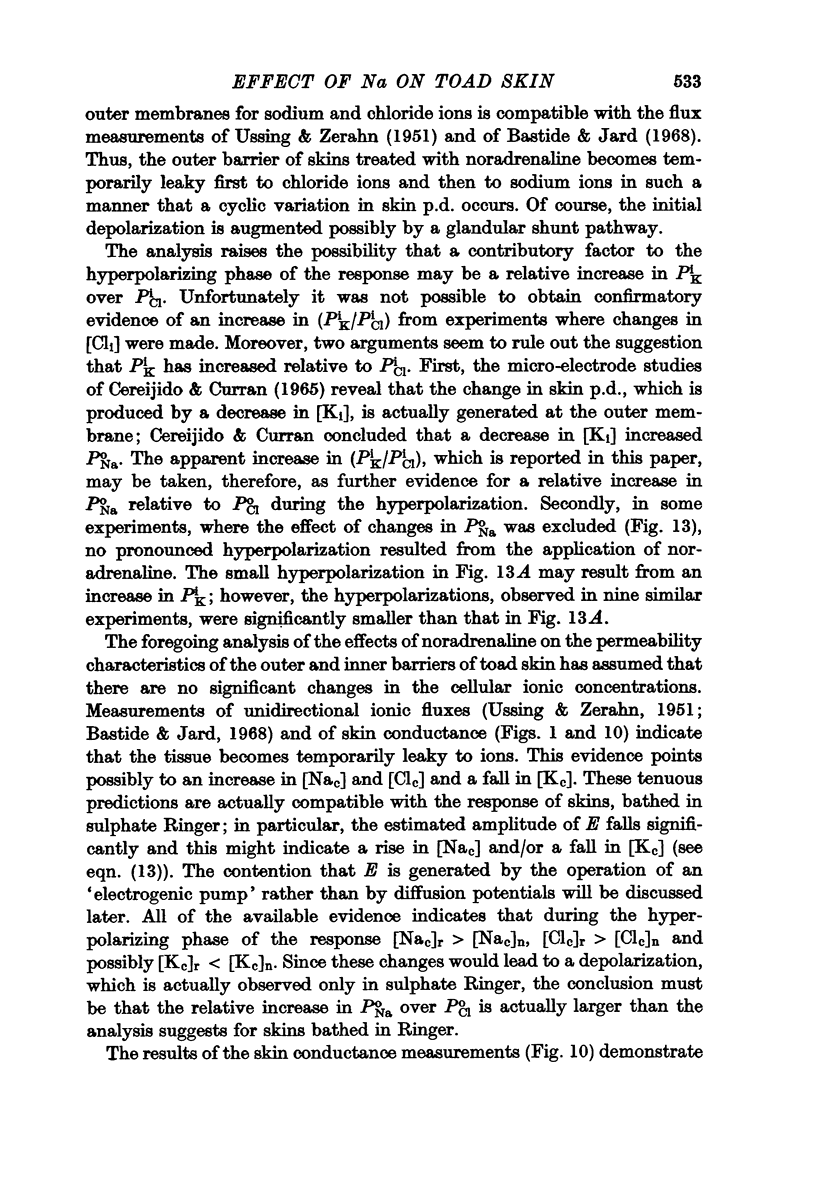
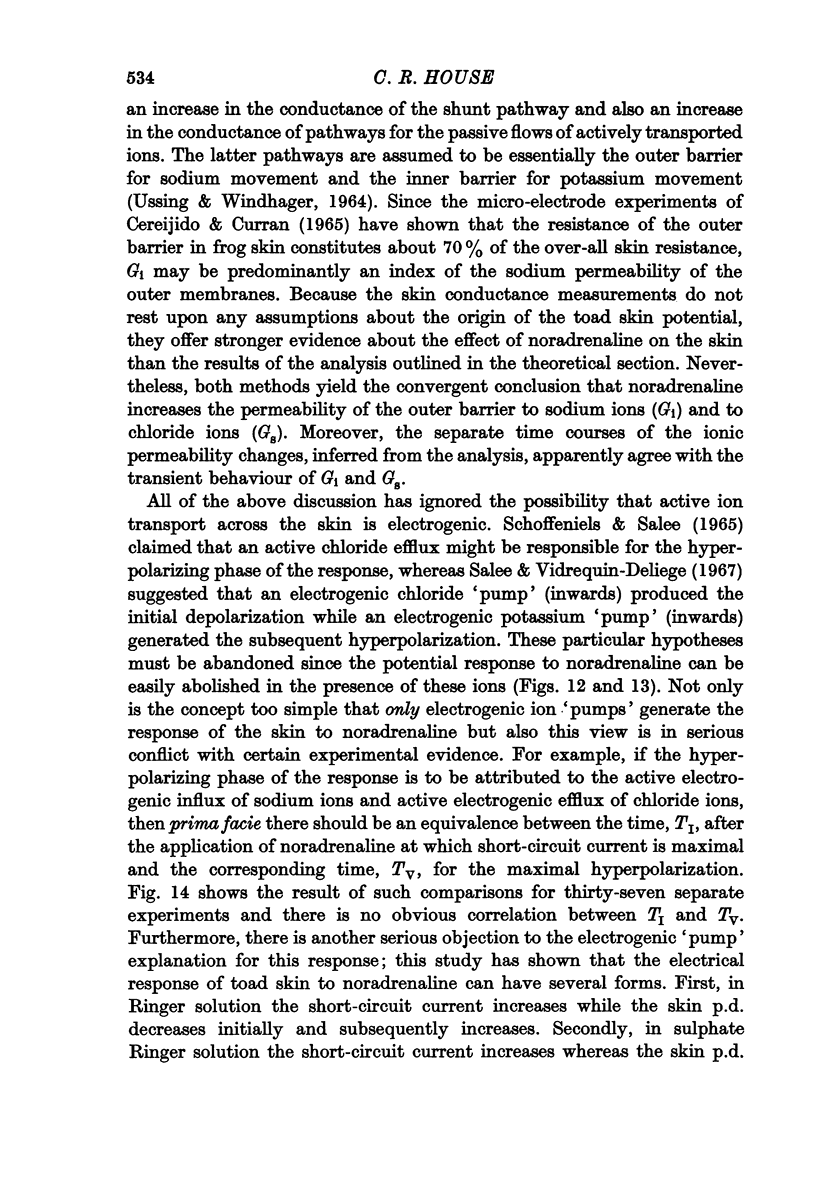
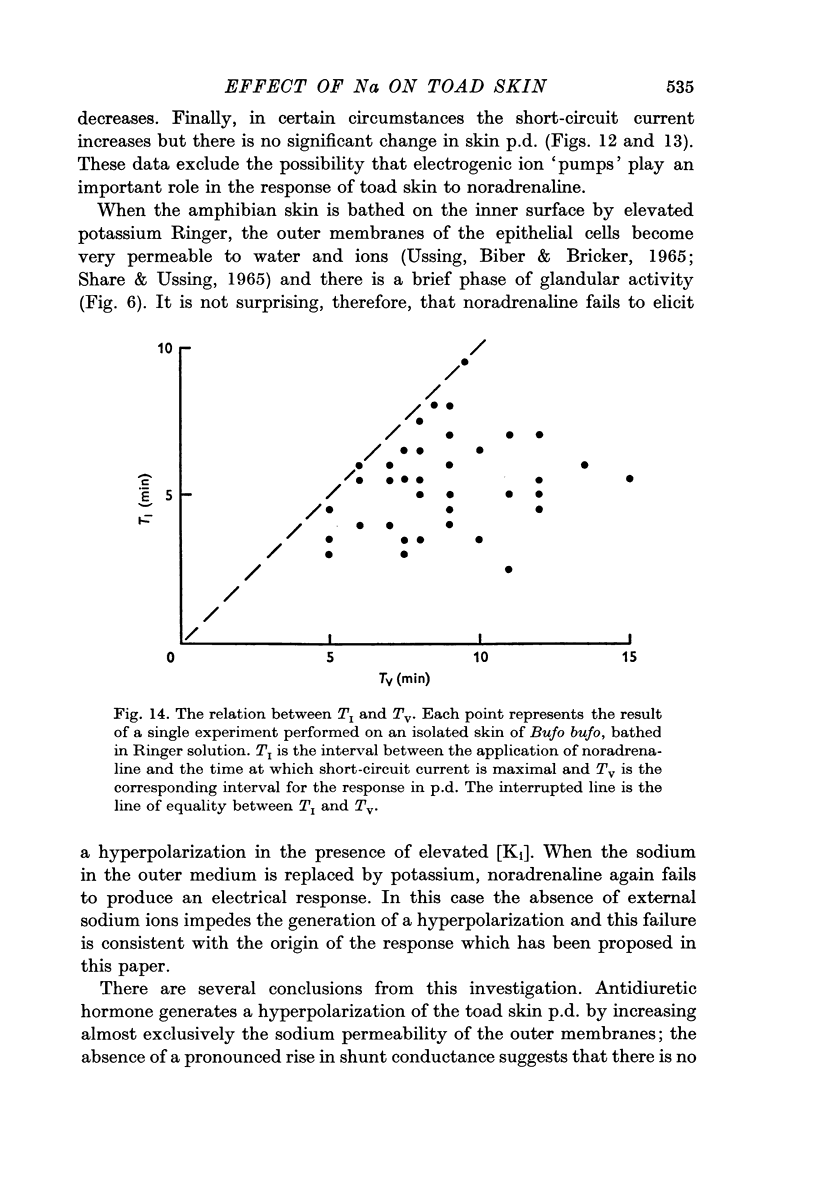
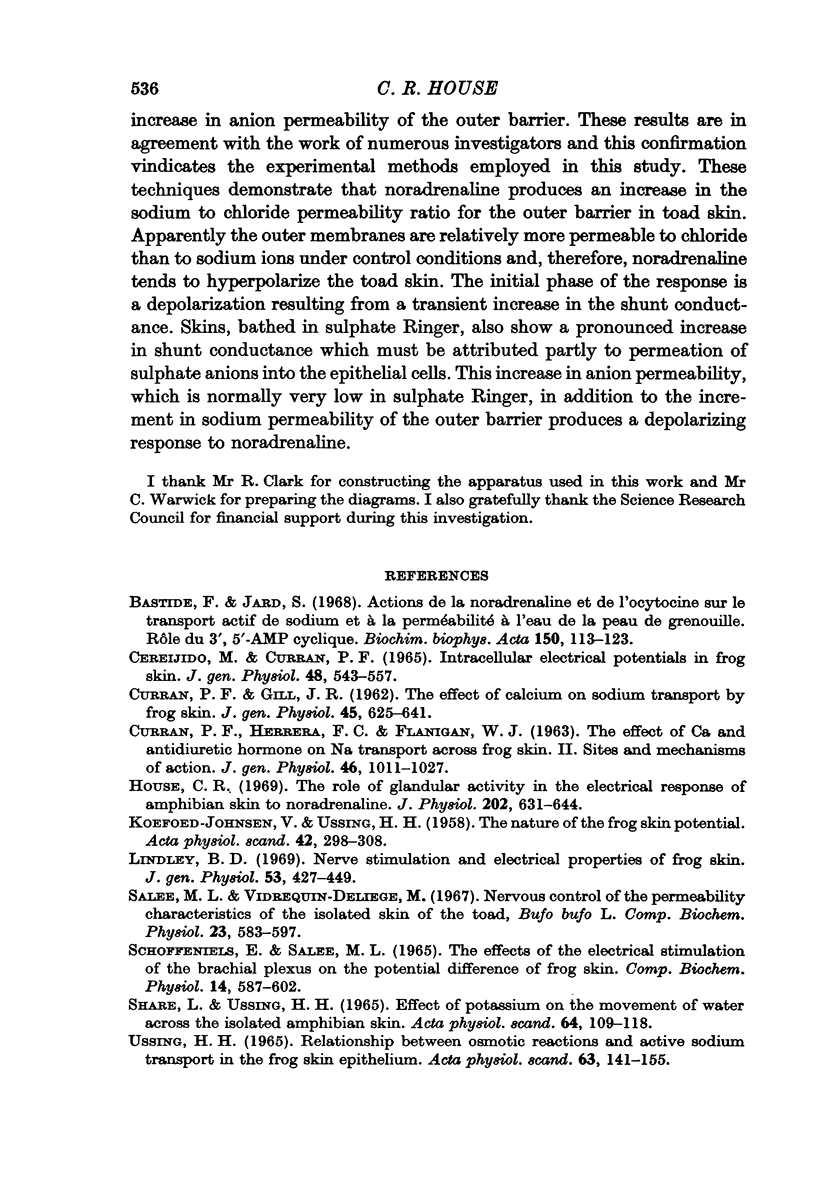
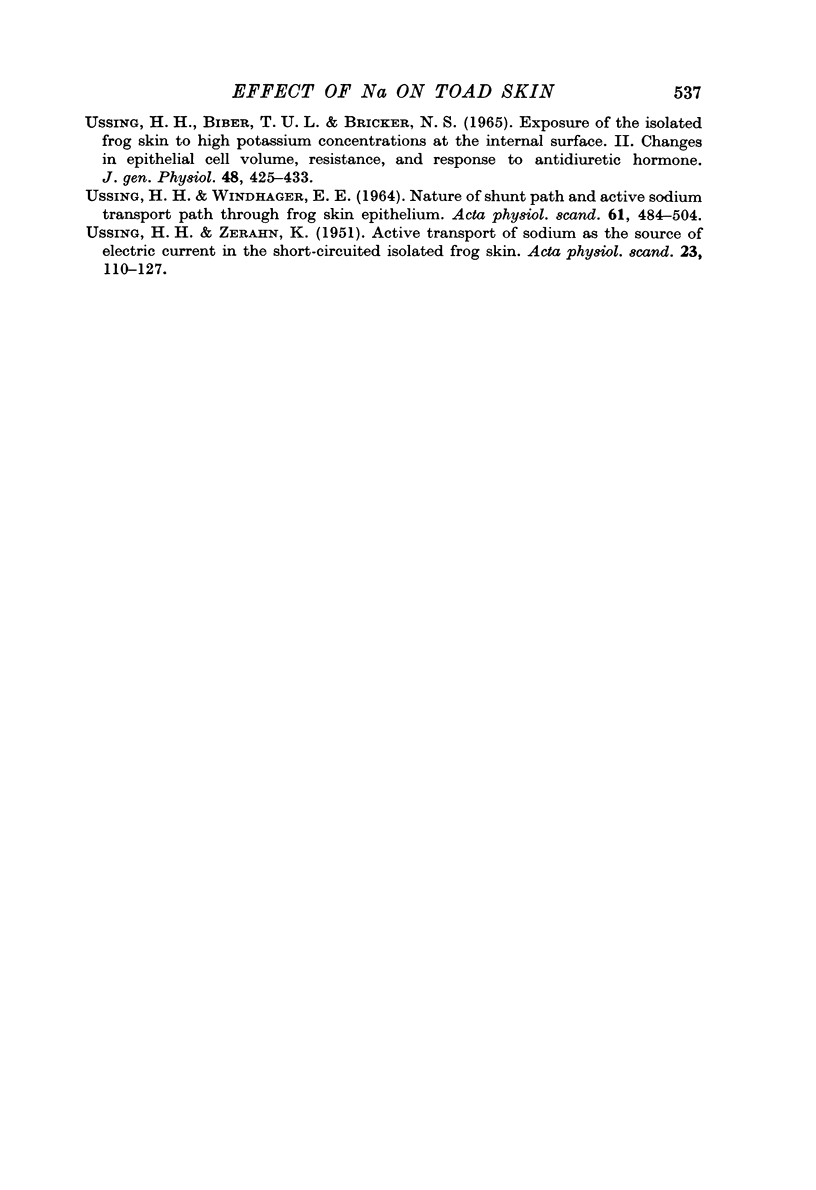
Selected References
These references are in PubMed. This may not be the complete list of references from this article.
- Bastide F., Jard S. Actions de la noradrénaline et de l'oxytocine sur le transport actif de sodium et la permeabilité à l'eau de la peau de grenouille. Rôle du 3',5'-AMP cyclique. Biochim Biophys Acta. 1968 Jan 3;150(1):113–123. doi: 10.1016/0005-2736(68)90014-x. [DOI] [PubMed] [Google Scholar]
- CURRAN P. F., HERRERA F. C., FLANIGAN W. J. The effect of Ca and antidiuretic hormone on Na transport across frog skin. II. Sites and mechanisms of action. J Gen Physiol. 1963 May;46:1011–1027. doi: 10.1085/jgp.46.5.1011. [DOI] [PMC free article] [PubMed] [Google Scholar]
- KOEFOED-JOHNSEN V., USSING H. H. The nature of the frog skin potential. Acta Physiol Scand. 1958 Jun 2;42(3-4):298–308. doi: 10.1111/j.1748-1716.1958.tb01563.x. [DOI] [PubMed] [Google Scholar]
- Lindley B. D. Nerve stimulation and electrical properties of frog skin. J Gen Physiol. 1969 Apr;53(4):427–449. doi: 10.1085/jgp.53.4.427. [DOI] [PMC free article] [PubMed] [Google Scholar]
- SCHOFFENIELS E., SALEE M. L. THE EFFECTS OF THE ELECTRICAL STIMULATION OF THE BRACHIAL PLEXUS ON THE POTENTIAL DIFFERENCE OF FROG SKIN. Comp Biochem Physiol. 1965 Apr;14:587–602. doi: 10.1016/0010-406x(65)90248-3. [DOI] [PubMed] [Google Scholar]
- SHARE L., USSING H. H. EFFECT OF POTASSIUM ON THE MOVEMENT OF WATER ACROSS THE ISOLATED AMPHIBIAN SKIN. Acta Physiol Scand. 1965 May-Jun;64:109–118. doi: 10.1111/j.1748-1716.1965.tb04159.x. [DOI] [PubMed] [Google Scholar]
- Salée M. L., Vidrequin-Deliège M. Nervous control of the permeability characteristics of the isolated skin of the toad Bufo bufo L. Comp Biochem Physiol. 1967 Nov;23(2):583–597. doi: 10.1016/0010-406x(67)90410-0. [DOI] [PubMed] [Google Scholar]
- USSING H. H., BIBER T. U., BRICKER N. S. EXPOSURE OF THE ISOLATED FROG SKIN TO HIGH POTASSIUM CONCENTRATIONS AT THE INTERNAL SURFACE. II. CHANGES IN EPITHELIAL CELL VOLUME, RESISTANCE, AND RESPONSE TO ANTIDIURETIC HORMONE. J Gen Physiol. 1965 Jan;48:425–433. doi: 10.1085/jgp.48.3.425. [DOI] [PMC free article] [PubMed] [Google Scholar]
- USSING H. H. RELATIONSHIP BETWEEN OSMOTIC REACTIONS AND ACTIVE SODIUM TRANSPORT IN THE FROG SKIN EPITHELIUM. Acta Physiol Scand. 1965 Jan-Feb;63:141–155. doi: 10.1111/j.1748-1716.1965.tb04052.x. [DOI] [PubMed] [Google Scholar]
- USSING H. H., WINDHAGER E. E. NATURE OF SHUNT PATH AND ACTIVE SODIUM TRANSPORT PATH THROUGH FROG SKIN EPITHELIUM. Acta Physiol Scand. 1964 Aug;61:484–504. [PubMed] [Google Scholar]
- USSING H. H., ZERAHN K. Active transport of sodium as the source of electric current in the short-circuited isolated frog skin. Acta Physiol Scand. 1951 Aug 25;23(2-3):110–127. doi: 10.1111/j.1748-1716.1951.tb00800.x. [DOI] [PubMed] [Google Scholar]


